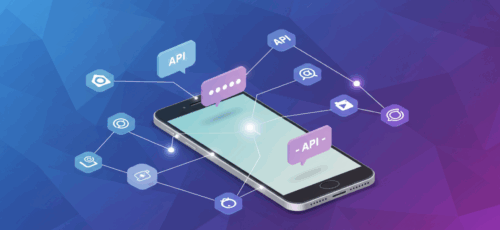Maximize voice API efficiency to cut latency, raise call completion, and control spend in modern apps.
- Optimize media paths: choose the nearest region, tune codecs, and trim round trips in your voice API integration.
- Build event-driven control: use asynchronous webhooks with idempotent retries, cached auth, and connection reuse in your programmable voice API.
- Engineer resiliency at the number layer: automate DID provisioning, CNAM/E911, and failover routing so inbound calls stay reachable.
- Instrument what matters: track MOS, ASR, and PDD with alerts, and protect your business communication API with IP allowlisting and STIR/SHAKEN.
Start now with a seven-step checklist; if you can’t plot MOS vs PDD for yesterday’s traffic, you’re flying blind.
Voice APIs power real-time communications in modern apps, but efficiency is a core differentiator for scalability and user experience. The web real-time communication market is projected to grow from $12.3 billion to $17.7 billion, reflecting the rising demand for low-latency voice, video, and messaging in apps.
For developers building voice-enabled services, efficiency means cutting call setup time, minimizing jitter and packet loss, and automating routing and number management without bloating your codebase. Whether you’re building IVRs, call centers, AI voice agents, or embedding voice features in your app, the way you integrate your voice API determines whether calls feel immediate or sluggish.
If your next feature is voice, aim for performance that beats expectations.
What Is a Voice API, and Why Does It Matter for Performance?
A voice API translates traditional telephony into programmable code, allowing developers to control calls, routing, and media with HTTP requests instead of complex SIP configurations. It bridges the gap between application logic and carrier networks, letting you spin up IVRs, call queues, or AI voice agents without deploying PBXs or proprietary infrastructure. Efficiency, in this context, means faster call setup, lower latency, and predictable quality even under variable network load.
How Do Programmable Voice APIs Differ from SIP Trunking?
While SIP trunking connects fixed endpoints through static configurations, a programmable voice API uses event-driven logic and cloud elasticity. It abstracts signaling, call control, and recording into REST endpoints or SDK methods that respond to webhooks in real time.
- Dynamic control. Instead of pre-defined dial plans, developers define behavior in code. For example, routing calls to a specific endpoint when a webhook event like call.answered fires.
- Faster iteration. Because APIs expose standardized methods and JSON payloads, developers can ship features quickly without reconfiguring carrier trunks.
- Smarter scaling. Modern APIs use regional media edges to shorten network paths, cutting delay and jitter for geographically distributed users.
- Built-in observability. Instead of sifting through SIP traces manually, developers can access CDRs and error codes to monitor health and latency trends.
In short, a programmable voice API shifts reliability and speed from network engineering to software engineering, empowering you to optimize performance directly in code.
Which Key Metrics Should Developers Monitor?
Every voice API integration should collect the same handful of real-time metrics that shape user experience.
| Metric | Why It Matters | Developer Approach |
| Latency (round-trip delay) | Anything above ~150 ms begins to feel unnatural in live conversation. | Use synthetic pings and WebRTC getStats() to monitor end-to-end delay, not just hop latency. |
| Jitter | Irregular packet arrival creates choppy or robotic audio. | Apply adaptive jitter buffers or smoothing. Adaptive buffers like JitBright can reduce perceived latency on mobile networks by 22%. |
| Post-Dial Delay (PDD) | Slow call setup leads to abandoned calls. | Measure time from API request → first ring signal. Optimizing routing logic often cuts PDD dramatically. |
| Mean Opinion Score (MOS) | Captures perceived audio quality based on packet loss and delay. | Many APIs expose MOS in call detail records; use it to trigger automated quality alerts. |
| Answer-to-Setup Ratio (ASR) | Indicates success rate of initiated calls. | Low ASR points to routing or carrier-level failures; automate re-routing when thresholds dip. |
Understanding these measurements allows developers to pinpoint where latency originates. Tracking both latency and jitter together provides the clearest view of congestion and packet timing drift, helping engineers prevent voice degradation before users notice.
7 Ways to Improve Voice API Efficiency in Your App
Optimizing a programmable voice API is less about rewriting code and more about designing for low latency, resiliency, and visibility from day one. These seven strategies can help developers build faster, leaner, and more reliable communication layers.
1. Optimize Media Routing and Codec Selection
Every additional network hop adds delay. Choose the nearest available media region or carrier edge to minimize round-trip time. Use narrowband codecs like G.729 or wideband options such as Opus based on your user base and quality requirements. Opus offers adaptive bit-rates that balance compression and fidelity, which is ideal for mobile users on variable networks.
Efficient routing stabilizes voice API integration across diverse endpoints and networks.
2. Adopt Asynchronous Webhooks for Real-Time Call Control
Synchronous call flows block execution while waiting for your application to respond. By handling call events asynchronously, you can process webhooks (like call.answered or call.failed) without halting media streams.
Example in Python (simplified):
@app.route(‘/voice/callback’, methods=[‘POST’])
def handle_voice_event():
event = request.json
if event[‘type’] == ‘call.failed’:
queue_retry(event[‘call_id’])
return ”, 202 # Non-blocking ACK
Asynchronous design keeps the programmable voice API responsive under load and avoids retry storms when transient network issues occur.
3. Cache Authentication Tokens and Reuse Connections
Repeated handshakes with your API provider’s servers add unnecessary delay. Caching OAuth tokens and reusing HTTPS sessions can reduce connection overhead.
In high-volume voice systems, persistent connections cut milliseconds from every request, enough to lower perceived call setup time (PDD).
4. Automate Number Provisioning and Routing Updates
Manual number management slows deployment and introduces routing errors. Instead, use your business communication API to dynamically purchase, configure, and release phone numbers via endpoints.
Automated routing ensures inbound calls are instantly rerouted during maintenance or failover events. For example, a healthtech app might provision temporary numbers per patient session, then release them after discharge to minimize unused capacity.
Beyond convenience, automation reduces misconfiguration risk, one of the most common causes of dropped inbound calls.
5. Monitor Call Quality Metrics That Actually Matter
Track call-level indicators like MOS, ASR, and PDD, not just uptime. MOS above 4.0 is defined as “good,” but thresholds should match your network conditions and user base.
Automate alerts when MOS dips or ASR falls below a defined baseline. Combine CDR data with your application logs so anomalies can be correlated instantly to geographic or carrier segments.
6. Secure Your Voice API Without Slowing It Down
Security and speed don’t have to conflict. Implement IP allowlisting, rate limits, and request signing for each API call. When outbound calls fail due to carrier-side verification, STIR/SHAKEN validation ensures your traffic isn’t misclassified as spam.
According to an FCC Robocall Mitigation Report, verified call identity now directly influences answer rates across many U.S. networks. Securing your voice API protects your platform and improves deliverability.
7. Plan Concurrency and Scaling Intelligently
Concurrency limits define how many simultaneous sessions your app can sustain without overloading downstream services. Implement adaptive scaling that adjusts thread pools, queues, and media ports based on live traffic rather than static limits.
For example, an e-commerce IVR may experience traffic spikes during sales events. Dynamically scaling API workers prevents delayed answers or 503 errors.
Pair concurrency planning with cost monitoring. Scaling horizontally helps avoid saturation but can drive up cloud billing if unchecked. Balance these forces to achieve both efficiency and predictability.
How Do You Design for Resiliency with Inbound Routing and DID Strategy?
When voice systems fail, it’s rarely because an API call throws an error. It’s because inbound calls never reach the application. True performance starts with resilient routing and an intelligent DID (Direct Inward Dialing) strategy that keeps lines open even when networks shift under load.
In traditional telephony, inbound traffic flows through static routes that depend on specific trunks or IPs. That rigidity breaks down when regions experience congestion or carrier impairments. By contrast, a voice API integration can dynamically reroute inbound calls based on status signals, API logic, or geographic failover rules.
An effective resiliency plan also extends to number management. Large deployments often use DIDs for specific workflows, such as marketing campaigns, regional hotlines, or enterprise departments. When those numbers are tied directly to routing logic, a configuration mistake can isolate an entire service area. Automating this lifecycle reduces that risk.
A well-designed business communication API should let developers:
- Provision DIDs programmatically, ensuring new numbers route correctly on creation.
- Update call routing dynamically, triggered by monitoring alerts or webhook events.
- Audit and release unused numbers, reducing operational overhead.
Resiliency includes compliance and trust layers that keep inbound calls legitimate. Automating CNAM registration and E911 provisioning ensures calls display accurate caller information and meet regulatory requirements. More importantly, these steps prevent call failures during emergencies or number-validation checks.
When integrated properly, a programmable voice API acts like a self-healing gateway, detecting degraded routes, rerouting traffic, and maintaining inbound reachability without manual intervention. For developers, that means fewer support tickets, shorter incident windows, and a user experience that feels seamless even during carrier-level disruptions.
Observability That Drives Decisions, Not Just Dashboards
Developers need actionable observability, such as telemetry that links real call events, media quality, and routing outcomes directly to the code paths that caused them. Efficient teams build pipelines that capture data from call detail records (CDRs), SIP traces, and webhooks, then push it into logging and analytics systems for correlation and alerting.
When latency spikes or audio cuts out, raw logs tell you why it happened. The key is to collect structured events in real time and analyze them automatically.
Reading CDRs and SIP Responses to Pinpoint Failures
A well-designed programmable voice API exposes both control-plane (signaling) and media-plane data. CDRs summarize the call lifecycle: timestamps, status codes, duration, quality scores, and route details. Developers can ingest those into a monitoring stack (e.g., Elasticsearch, Datadog, or Prometheus) to track trends and flag anomalies.
Here’s a simplified JSON example of a CDR record returned by a modern API endpoint:
{
“call_id”: “b9f341a2-e742-4ef6-8b9a-9811c62e9d33”,
“direction”: “inbound”,
“from”: “+12125550123”,
“to”: “+18335550123”,
“start_time”: “2025-10-10T14:35:22Z”,
“end_time”: “2025-10-10T14:36:01Z”,
“status”: “completed”,
“sip_response”: “200 OK”,
“mos”: 4.3,
“pdd_ms”: 620,
“jitter_ms”: 12,
“packet_loss”: 0.4
}
From this payload, developers can derive meaningful insights:
- High PDD (Post-Dial Delay) combined with normal jitter often points to routing delays, not network issues.
- Low MOS and rising packet loss indicate media path instability — potentially a codec mismatch or overloaded edge.
- Consistent 3xx/5xx SIP responses suggest failed call transfers or misconfigured failover logic.
You can build alerts that fire when MOS drops below 3.8, or when certain SIP responses exceed thresholds.
Example pseudo-logic in Python:
if record[‘mos’] < 3.8 or record[‘sip_response’].startswith((‘4’, ‘5’)):
send_alert(f”Voice degradation on call {record[‘call_id’]}”)
These small automations replace manual troubleshooting with real-time detection. Developers can route alerts to Slack, PagerDuty, or internal dashboards, transforming passive monitoring into active incident prevention.
From Metrics to Meaningful Action
Instead of collecting every SIP event, focus on derived performance indicators like:
- Answer-to-Setup Ratio (ASR) – measures network success rate.
- Mean Opinion Score (MOS) – quantifies user-perceived quality.
- Post-Dial Delay (PDD) – tracks responsiveness of outbound requests.
By connecting these signals to webhook latency or call routing data, teams can pinpoint whether an issue stems from the app, the API layer, or the carrier path. Organizations that automate network monitoring through event-driven APIs reduce recovery times by roughly 30%, proving that observability is about tangible performance gains.
What Is Cost-Aware Engineering for Business Communication APIs?
Performance and cost often compete for priority in real-time communication systems. The smartest teams treat them as two dimensions of the same efficiency problem. Every routing decision, codec setting, and concurrency limit affects how well your app performs and how much it costs to keep it running at scale.
Balancing Concurrency and Capacity
Concurrency defines how many simultaneous sessions your application can support before degradation begins. In a voice API integration, concurrency applies to both signaling and media paths. Under-provision and you risk dropped calls; over-provision and you pay for idle capacity.
A data-driven approach starts with understanding historical traffic patterns. Pull concurrent session metrics from your API provider’s usage reports or CDR exports, then chart call volumes over time. Adaptive scaling can maintain low latency without wasting resources.
Codec and Media Choices That Shape Cost
Codec selection has a measurable impact on both audio quality and bandwidth cost. For example:
| Codec | Bitrate (approx.) | Typical Use Case | Cost Consideration |
| G.711 (μ-law/A-law) | 64 kbps | Legacy PSTN interconnects | High quality but high bandwidth; best for fixed networks. |
| G.729 | 8 kbps | Low-bandwidth environments | Lower quality but significant bandwidth savings. |
| Opus | 6–40 kbps (adaptive) | Mobile and browser-based apps | Variable bitrate reduces cost under congestion. |
In a high-volume outbound campaign, switching from G.711 to Opus can cut data transfer costs without audible degradation. Adaptive codecs consistently deliver lower packet loss and smoother jitter compensation at reduced bandwidth.
Monitoring Usage to Prevent Billing Surprises
Many developers underestimate API billing tied to retries, webhook volume, or misrouted calls. Instrument logging around your programmable voice API to detect repeated 4xx or 5xx responses, as these often signal loops or invalid endpoints silently consuming budget.
Example in Python:
if response.status_code >= 400:
log_error(response.json())
increment_counter(“api_retries”)
if metrics[‘api_retries’] > threshold:
trigger_alert(“Excessive API retries detected”)
Small safeguards like this prevent thousands of unnecessary API calls during transient outages.
Finally, treat cost visibility as part of observability. Export per-call or per-route spending metrics to the same dashboards used for MOS and latency. This alignment lets teams optimize technical and financial performance in the same workflow.
Voice API Examples: From IVR to Real-Time Transcription
Abstract performance advice only matters if it works in production. Below are two lightweight examples that show how developers can apply voice API integration patterns for responsiveness and reliability.
Low-Latency IVR with Asynchronous Call Control
Instead of nesting logic inside long-running sessions, design IVRs as event-driven microservices. Each menu option or state triggers a webhook, and your app replies instantly with new call actions.
@app.route(“/ivr/menu”, methods=[“POST”])
def handle_ivr():
data = request.json
if data[“digits”] == “1”:
return play_audio(“account-balance.mp3”)
elif data[“digits”] == “2”:
return transfer_call(“+18005550123”)
return say(“Invalid option.”)
This approach eliminates blocking and improves call setup responsiveness, especially under heavy concurrent loads. Developers can cache responses and reuse sessions to reduce post-dial delay (PDD) and API latency.
Real-Time Transcription with Streamed Audio
Modern programmable voice APIs support live audio streaming for transcription or analytics. You can route RTP packets to a speech-to-text engine, process transcripts, and return insights mid-call.
def on_audio_chunk(chunk):
text = stt_model.transcribe(chunk)
if “cancel” in text.lower():
end_call()
By handling audio asynchronously, you preserve low jitter while enabling features like live note-taking or compliance redaction.
Both of these designs highlight a central principle: voice performance is built into architecture, not added later. When routing, streaming, and decision-making all operate asynchronously, your business communication API stays responsive regardless of traffic volume or network conditions.
Troubleshooting Playbook: How to Fix Common Voice API Performance Issues
Even well-built systems experience call degradation, dropped connections, or one-way audio. The key is to diagnose quickly and act automatically. Below are five common problems developers face in voice API integration, with quick remedies that target root causes.
1. Ring-No-Answer or Long Call Setup
Cause: Misrouted DIDs, unresponsive webhook endpoints, or excessive retry logic.
Fix: Check webhook response times and ensure your app returns 200 OK or 202 Accepted within 2 seconds. Slow handlers block the API’s retry queue and inflate post-dial delay (PDD).
2. One-Way or Robotic Audio
Cause: Codec mismatch or asymmetric NAT traversal blocking RTP.
Fix: Force consistent codec negotiation (e.g., Opus or G.711) and verify both endpoints can exchange RTP on open ports. Test using packet capture or a built-in media_diagnostics endpoint.
3. High Jitter or Packet Loss
Cause: Congested network path or overloaded media worker.
Fix: Relocate call handling to a closer PoP or edge region. If you’re containerized, monitor CPU and network saturation. Implement adaptive jitter buffers or automatically adjust bitrate during congestion.
4. Frequent 4xx/5xx API Errors
Cause: Misconfigured routing or malformed JSON in webhook responses.
Fix: Validate payloads against schema and introduce exponential backoff for retries. Log every failed response body to a structured index to spot recurring patterns.
5. Unexpected Billing Spikes
Cause: Infinite retry loops or abandoned sessions.
Fix: Add rate limits on your outbound API requests and close inactive sessions programmatically after a timeout. Automate usage audits by cross-referencing CDR totals against your internal event logs.
FAQ
- Can a voice API handle AI-driven call features like real-time transcription or sentiment analysis? Yes. Many programmable voice APIs now support real-time audio streaming via WebSocket or gRPC, allowing you to connect directly to AI services. Developers can stream inbound audio to speech-to-text or sentiment models and trigger in-call automation based on keywords or tone, all while maintaining sub-second latency if the media path is optimized.
- How do regional regulations affect voice API integration for global apps? Different countries impose routing and recording rules that can affect call flow design. For example, GDPR in Europe and CCPA in California require explicit consent for recorded calls, while India’s DoT regulations limit international call masking. When using a business communication API, developers should parameterize routing and storage rules to respect each region’s compliance layer without hardcoding logic.
- What’s the difference between scaling a voice API and scaling typical web APIs? Web APIs usually scale by request volume; voice APIs must scale in both signaling and media concurrency. That means provisioning more SIP sessions, increasing bandwidth for RTP streams, and optimizing thread pools for real-time processing. Horizontal autoscaling works best when metrics like call duration, active channels, or PDD thresholds drive expansion, not just HTTP request counts.
Turning Efficiency into an Advantage
Efficient voice architecture is engineered through event-driven control, adaptive routing, and data-informed optimization. A well-implemented voice API bridges reliability and agility, delivering clear calls at scale while keeping operational costs predictable.
For developers, this means building systems that measure, adapt, and improve automatically. Whether you’re handling inbound support lines, powering voice bots, or connecting distributed teams, the efficiency principles outlined here help your app sound sharper and respond faster.
Flowroute helps developers achieve that level of precision and performance with a network built for reliability and direct carrier access. Our programmable voice API combines intelligent routing, transparent call data, and real-time diagnostics, giving engineering teams control over latency, call quality, and cost, all through code. Get started today to build scalable, resilient voice experiences that perform under pressure.

Mitch leads the Sales team at BCM One, overseeing revenue growth through cloud voice services across brands like SIPTRUNK, SIP.US, and Flowroute. With a focus on partner enablement and customer success, he helps businesses identify the right communication solutions within BCM One’s extensive portfolio. Mitch brings years of experience in channel sales and cloud-based telecom to every conversation.





